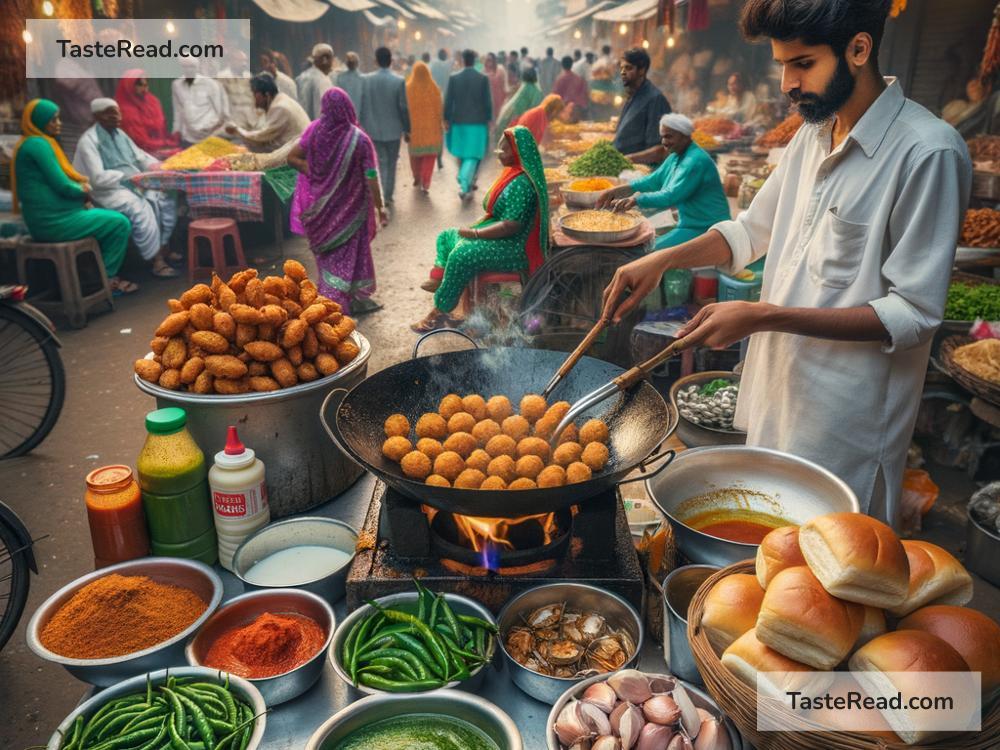Discovering Lively Indian Vada Pav Culinary Traditions
Indian culture is often described as diverse, vibrant, and full of life. This description extends beyond its festivals, clothing, and music—it touches the culinary traditions as well. Among India’s countless delicious dishes, there’s one iconic street food that stands out for its simplicity, uniqueness, and mouthwatering taste: the vada pav. A humble food from Maharashtra, vada pav is not just a snack; it’s an experience, a tradition, and a symbol of everyday India.
What is Vada Pav?
Vada pav is often called Mumbai’s burger, but it’s way more than just a bun and patty. It consists of a spicy, deep-fried potato fritter (called vada) placed between two soft slices of bread known as pav. It’s typically served with chutneys, garlic powder, and occasionally green chilies for an extra kick. Vada pav is flavorful, affordable, and easy to eat, making it the perfect food for both busy locals and curious travelers.
Origins: How Vada Pav Was Born
Like many great dishes, vada pav has humble beginnings. It originated in Mumbai, the bustling city of dreams, in the 1960s. A clever street vendor named Ashok Vaidya, who worked near the Dadar train station, wanted to create a quick, filling snack for passengers and workers on the go. He combined the spicy, crispy potato fritter (vada) with the pav bread—a key element of Mumbai’s street food culture. With a sprinkle of chutney and garlic powder, vada pav soon became a sensation, giving busy people a convenient yet satisfying meal.
Over time, vada pav evolved into more than just food—it became an affordable option for people from all walks of life. Whether you were a college student, office worker, or taxi driver, vada pav fit everyone’s pocket and taste buds.
The Heart and Soul of Vada Pav: Spices and Flavor
What makes vada pav so special is its bold flavors. The key ingredient in the potato fritter is mashed potato mixed with spices like turmeric, mustard seeds, coriander, and green chilies. This mixture is dipped in gram flour batter and deep-fried to crispy perfection.
The bread, or pav, is soft and slightly sweet, balancing the spicy notes of the vada. But the true magic lies in the accompaniments—the chutneys. Usually, vada pav is served with tangy tamarind chutney, fiery green chili chutney, or a dry garlic chutney that adds a punch. The dry garlic chutney, made from red chili powder, garlic, and coconut, is often the secret ingredient that gives vada pav its signature burst of flavor.
To take things up a notch, street vendors often serve vada pav with fried green chilies on the side. Each bite is an explosion of textures and tastes: crunchy vada, pillowy pav, spicy chutneys, and an optional fiery kick from the chili.
Vada Pav as a Cultural Icon
Vada pav is more than just street food—it has become a proud symbol of Mumbai’s spirit. In the fast-paced life of the city, where everyone is rushing from one place to another, vada pav serves as a moment of pause, comfort, and energy. It is also an affordable meal that bridges social divides. Rich or poor, office worker or laborer, everyone loves vada pav.
This humble food is a reflection of India’s ability to create something extraordinary out of simple ingredients. It’s the perfect example of how Indian cuisine thrives on creativity, resourcefulness, and deep-rooted culinary traditions.
Regional Twists and Modern Innovations
Though vada pav originated in Maharashtra, it has traveled far and wide across India, winning the hearts of people in different states. As it spread, vada pav began to adapt to local tastes.
In Gujarat, for instance, you may find vada pav served with a sweeter chutney to match the Gujarati palate. Some vendors add shredded cheese on top for a modern twist, turning the snack into “cheese vada pav.” In recent years, people have experimented with variations such as adding mayonnaise, sauces, or even replacing the potato vada with non-traditional fillings like paneer or chicken. These creative tweaks keep the dish exciting and appealing to new generations.
Restaurants, cafes, and even posh eateries have embraced vada pav, offering gourmet versions with exotic ingredients or fancy presentation. Despite these innovations, many still believe that the best vada pav can only be found on the streets of Mumbai, where it all began.
How to Make Vada Pav at Home
While street vendors have mastered the art of making vada pav, it’s surprisingly easy to recreate at home. The key is preparing the potato fritters and chutneys from scratch. You can enjoy experimenting with different spice levels to suit your taste. Pair it with a cup of hot chai, and you’ve got yourself a classic Indian snack that feels both comforting and celebratory.
For those new to Indian cooking, there are plenty of recipes online that simplify the process. Homemade vada pav is a great way to experience the flavors of Mumbai without leaving your kitchen.
Conclusion: A Bite of India’s Heart
Discovering Indian culinary traditions through vada pav is like stepping into the heart of Mumbai—a fast-paced, exhilarating city full of life and flavor. This humble, spicy snack captures the essence of Indian street food culture and proves that good food doesn’t have to be expensive or complicated.
Whether you’re a foodie looking to explore new tastes or someone simply curious about India’s vibrant culinary scene, vada pav is a must-try dish. It’s not just food—it’s a story, an experience, and a symbol of community. So, the next time you spot a street vendor serving vada pav, don’t hesitate to grab one. One bite might just transport you to the lively streets of Mumbai, where this iconic snack was born.


